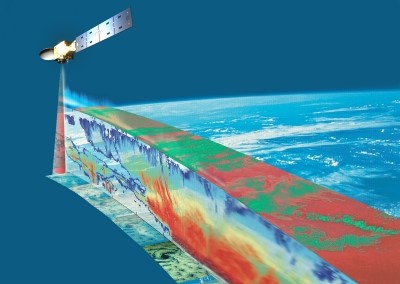
- Ref: ProExcel_00204
- Funding agency: Junta de Andalucía (Regional Government)
- Period: 01/01/2023 - 31/12/2025
- PI: Francisco Navas Guzmán (University of Granada)
- Researchers: Alberto Cazorla Cabrera (University of Granada), Roberto Román Díez (University of Valladolid), María José Granados Muñoz (University of Granada), Juan Antonio Bravo Aranda (University of Granada), Alexander Haefele (MeteoSwiss, Switzerland), Rolf Rüfenacht (MeteoSwiss, Switzerland), Carlos Toledano (University of Valladolid), África Barreto (Aemet), Milagros Herrera (University of Lille, France)
Abstract
The lack of vertical profiles of aerosol properties with high-spatial and temporal resolution over wide regions is highlighted in the last three IPCC (Intergovernmental Panel on Climate Change) reports as the contribution to the global radiative budget subject to the largest uncertainties. For that, information on the large scale 4-dimensional aerosol distribution in the atmosphere should be continuously monitored. To monitor aerosol in a global scale, there is a need for denser networks that could provide information on the 4D distribution of atmospheric aerosol. The developments of ceilometers with profiling capabilities as well as advances in the calibration techniques related to such devices offer the opportunity of implementing dense and continuously operating ground-based networks for the detection and quantification of aerosol. This global scale information is crucial for improving the existing aerosol models. AEROMOST aims to monitor vertical profiles of aerosol optical and microphysical properties with high spatial and temporal resolution in a global scale. For that, we will develop and establish a system capable to assimilate column-integrated aerosol properties from sun/sky photometers and aerosol vertical profiles from lidars to apply GRASP inversion algorithm. The aerosol products from this system will provide near-real-time vertically-resolved and columnar aerosol properties in a global scale. A first approach will be implemented using the measurements from the ground-based networks of AERONET (sun/sky photometers) and E-PROFILE (ceilometers) which will be used as input data of GRASP. This will allow obtaining the densest network of aerosol vertical properties in Europe. A second approach will use different datasets since the AERONET measurements will be combined with the vertical aerosol measurements from ATLID lidar on board of EarthCARE satellite. This second approach will allow providing a global aerosol monitoring around the world and in addition we will validate and add some new products to the EarthCARE mission. Evaluation of the different aerosol products from the two proposed approaches will be carried out comparing with independent measurements using sophisticated Raman lidars and other inversion algorithms. In addition, intensive field campaigns are planned at the supersite of Granada station (Spain) to achieve a better characterization of aerosol properties and evaluate the different aerosol products.